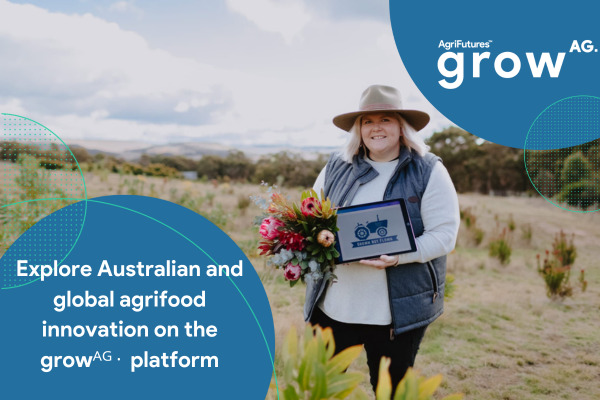The UK government created an Agri-Tech strategy in 2013 after the sector was identified a key national industry and was awarded £160 million in funding from the Treasury department. This funding has translated into a range of different initiatives and recently resulted in some £17.8 million (£27.4 million) of funding awarded to a range of agtech companies in the UK through the £70 million Agri-Tech Catalyst Fund, which run by the UK’s innovation agency Innovate UK.
The funding awards coincided with the launch of Agrimetrics, a big data center to promote collective information and identify innovation ideas. The center is a joint venture between Rothamsted Research, University of Reading, the National Institute of Agricultural Botany and Scotland’s Rural College.
AgFunderNews recently met George Freeman MP, UK Minister for Life Sciences, to hear a bit more about the strategy and the initiatives the UK government is promoting for the country’s agtech sector.
What is the scale of the opportunity in agtech today?
Agri-tech is a huge sector that government hasn’t really been actively supporting in the last few years. The foresight report sets the challenge for us very clearly. We have to double our food production by 2050 on the same land area with half as much energy and water. Well, the Malthusian would find that a pessimist challenge but most of us who understand how the industry works and how science and innovation work, would understand that that’s an incredible opportunity for the agricultural and agri-tech sector.
The UK is still a global powerhouse in science and still have a very advanced and progressive farming industry, particularly the top 30 percent of UK agri. We also have a highly professional global food retailing sector, which is taking an increasing interest in their supply chain. And thirdly we have incredible marketing opportunities, both from inward investing from the emerging nations — some of the rich petrodollar states in the Middle East and others have big food security challenges — and export market for both our food and just as importantly our agri-tech.
When we asked industry what they thought we spent in the UK of agriculture research, their answer was typically 10 times less than what we do. It turns out we spend half a billion pounds a year on agriculture research but no-one knew and it was spent through 20 different funding schemes with no joined up strategy and there was no clarity.
What funding schemes were active before?
DEFRA had some programs, as did BIS, some agriculture and horticulture development boards, DFID and so on. So that was classic government: lots of programs and no proper joined up strategy. So we wanted to ask industry, what are the areas and priorities that government should be investing in? Is it genomics, soil, water? What’s the right balance?
We should be investing for the long term science that industry can’t possibly be expected to support, but we should also be supporting the innovation of science and technology into its active use in the industry.
So what is the strategy?
The central challenge was what can we of to better join up our science research base with our industry and global markets?
We have pulled together a leadership council and made sure we had on it both scientists and progressive farming leaders and food retailers, so that we can build a supply chain approach knowing that consumers on one end want to know the provenance and environment footprint of their food; and farmers need to be getting information on technologies and how they can deliver more with less. So that’s what the leadership council is there for: to put that voice right at the heart of the science base and build a supply chain perspective within the industry. The corporates involved are Pepsico and Sainsburys and we are looking at bringing more on now.
So we have set out a commitment over the next 10 years to do three key things and three key interventions, and we have secured £160 million from the treasury for these three initiatives.
The first is the Agri-Tech Catalyst Fund, a model I designed for the pharmaceutical space, based on quick money and match funding, where we put money in if someone in the industry does. So it’s an industry-led project with clear commercial goals. We’re not trying to second guess or pick the winner; if industry and investors are prepared to back a technology and put their money at risk, then we’re prepared to support them. We have now funded over 100 projects and it’s had a really catalytic effect on getting stuff going. The scale of growth in the sector in the UK is a testament to that.
Secondly, we decided to launch an institute for the metrics of sustainability: Agrimetrics. It’s a UK big data center for excellence and a global hub for the science of sustainability. Big data is transforming the sector so we are creating a place where you can get climate data, historical field pattern data, price data, all the international futures pricing, all in one place. You can run analysis and start to drive insights and lead the world in an exciting field.
How do you define what’s sustainable? We think the consumers of tomorrow are going to want to see a green tractor on a label and have confidence that it’s environmentally sustainable. And that means developing the science of tracking across the whole supply chain water use, plastic use, and soil compaction. Unless we measure it properly, the industry has no hook to help drive forward. It’s a very important center and we want it to set the international standards for the metrics of sustainability; to be an incubator for emerging companies in the space and a data resource for startups to plug and play.
Thirdly, we are supporting the roll out of agtech from researcher centers. An innovation center where frontline farmers and growers can see a demonstration farm and learn practical techniques. This will support the roll out of agtech from researcher centers. We had bids out for the first three centers and are about to announce the winners, and then there are another series of applications in the pipeline. We really want this to be not just great science in a laboratory, but we want farmers out in the front line to see and touch practical ways to adopt technology.
How are farmers receiving these centers and what interest have they shown?
We haven’t launched them yet, but historic evidence shows that if you look at places like Broom’s Barn at Rothamstead Research, the sugar research center has been hugely rated by sugar growers in the area that are hungry for knowledge.
And we don’t just want farmers to see scientists there, but to meet entrepreneurs with innovations.
I am really keen to make sure that my door is open and I want to hear from frontline investors that we’re doing the right thing.
Have news, tips or want to write a guest post? Email [email protected]















Sponsored
Sponsored post: The innovator’s dilemma: why agbioscience innovation must focus on the farmer first